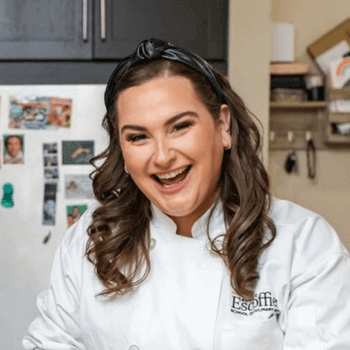When you consider your options for a culinary career, there are likely a handful of possibilities that come to mind first—like working in a restaurant, for a catering company, or in a hotel. But have you ever considered careers that might be a little more “off the beaten path”?
Working as a food stylist can be a unique and rewarding career for a person with the right inclination. It’s a competitive industry, but for someone with an eye for design, an entrepreneurial spirit, and a personable demeanor, this less-common career choice could be a perfect fit.
So, what does a food stylist do, and what steps might you take in order to enter this profession? Let’s take a look at what may be involved in pursuing a food stylist career.
What Is a Food Stylist?
A food stylist is a person who prepares and stages food for film and photo shoots, with the objective of creating beautiful and appetizing images not only through the food they make but also through their use of props, scenery, and presentation.
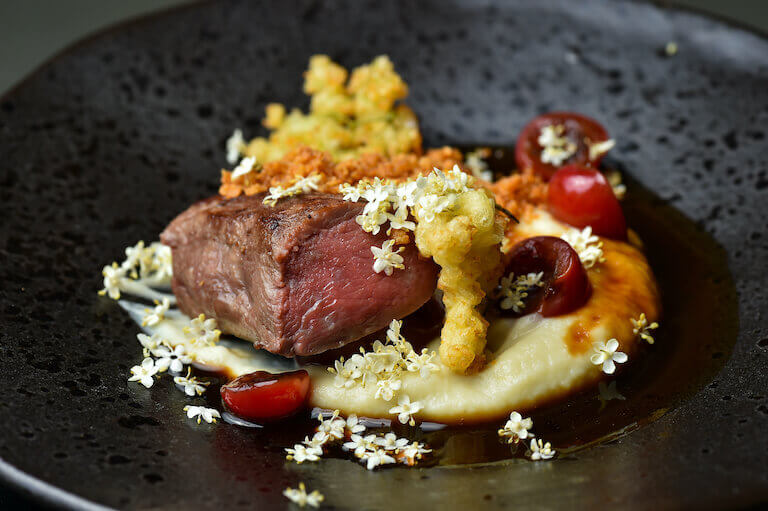
A food stylist must be able to prepare and stage attractive dishes.
They may work in a wide variety of settings, styling food for live broadcasts, commercials, movies and TV shows, cookbooks and other print media, and more!
It’s a dynamic and complex role that can require a diverse skill set and attention to detail. Just ask Lisa Spychala, Escoffier graduate and professional food stylist.
“In most cases, you’re responsible for everything,” Lisa says of her work. “Shopping for the ingredients, cooking the ingredients, [plating the dish]. You have to know how long the food is going to be on set. How many multiples do you have to make? Is anyone going to eat it?”*
As such, food stylists should not only know how to cook and plate food, but also how to source ingredients and materials on a budget, how to make sure their dishes stay appealing for extended periods of time, and how to interact with people on set—including food photographers, videographers, producers, and talent. Also, since food stylists are generally freelancers instead of full-time employees, they should be comfortable networking and socializing in order to make connections and find new opportunities.
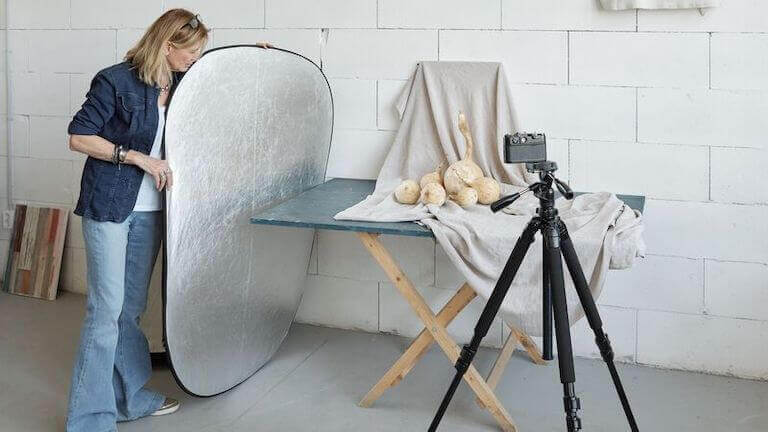
Food stylists are likely to spend time on set, staging food and working with other professionals.
Key Steps to Becoming a Food Stylist
As with many culinary careers, there is no one path here—but if you’re curious about how to get a job as a food stylist, there are some steps you can take that may help bring this career goal closer to reality.
1. Get Hands-On Food Experience
Not every food stylist is a trained chef, but having a solid grounding in the culinary arts can be a big asset. Getting hands-on food experience by working at a restaurant, bakery, catering company, or in some other professional setting can go a long way in helping you acquire the basic skills you may need as a food stylist.
Why can this experience be so valuable? It can help you get to know your subject matter—good food—and learn how to make it look so appetizing that other people want to eat it. Working in a busy restaurant with other professionals can help give you an understanding of what appeals to different consumers, and you may learn tips and tricks for food preparation and presentation, in addition to getting up-to-date with food trends.
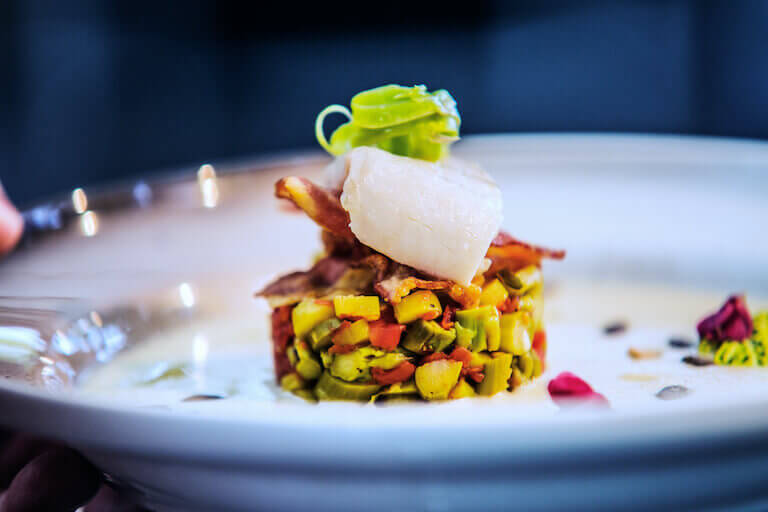
Professional experience can help you stay abreast of trends in food preparation and presentation.
Working in a professional setting can also give you opportunities to network with other culinarians, which could be helpful no matter what you want to do with your career in the food and hospitality industry.
Of course, getting this kind of experience may look different for different people—but having some form of hands-on training can be a good start as you embark on your food stylist career.
2. Consider Pursuing Formal Education
Another important step to consider could be whether you want to pursue a culinary arts degree or diploma. While not a prerequisite for landing a job as a food stylist, formal culinary education can help set you apart from others in your field. Not only can this route give you the chance to explore fundamental cooking techniques, but your curriculum may also consist of other courses that could benefit you.
Escoffier’s culinary arts programs may include courses in food science, entrepreneurship, and world cuisines—giving students exposure to a broad range of knowledge and skills that could be directly applicable to their work.
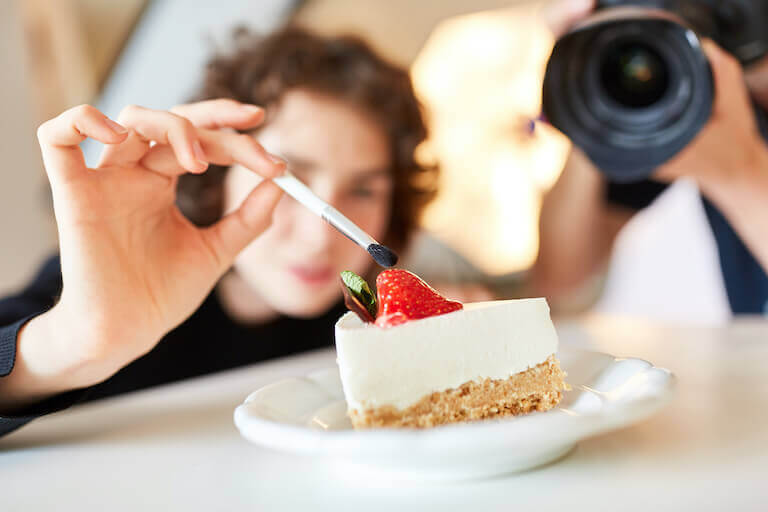
Food stylists are typically attentive to detail and may have an eye for design.
No matter where you are in your career, pursuing a culinary education can be a great way to enrich yourself and open up new possibilities. Lisa Spychala, for example, had already been working as a food stylist for over a decade when she decided she was ready to enroll in a culinary program, seeking to improve her fundamental knowledge of ingredients and cooking.
She chose to pursue a diploma in Culinary Arts through Escoffier’s online program so that she could keep working as a food stylist while also getting her education. Having completed her program, she’s proud of the skills she’s built, as well as the confidence the experience has given her to take her career to the next level.
Beyond the opportunity to develop knowledge and practical skills, enrolling in a program through Escoffier can also give students access to a network of Chef Instructors capable of providing invaluable career insight and mentorship.
3. Start Building a Portfolio
So, you’ve built up your fundamental skills and obtained a formal education—what next? Developing a strong portfolio can be a great way to start to make a name for yourself as a food stylist. In this profession your work is your calling card, so assembling materials that show off what you’re capable of can be an important step in proving yourself to potential employers.
How might you go about this? Getting experience working alongside established food stylists could be a good place to start. If you’re just starting out on this career path, try searching for assistant food stylist jobs in your area. You could also search for open food stylist jobs; you may not have enough experience for that role yet, but you could reach out to the employer to see if they might need an assistant or intern.
Another option could be to contact businesses likely to work with food stylists, like publishers or production companies, and see if there are any opportunities there. It may even be possible to find your way into this career through a tangentially related position; Lisa first started working as a food stylist as part of her job as an associate producer creating content for TV programming.*
In any work you do, consider asking your employer and the photographers or videographers you work with if you can use those images as part of your portfolio.
You might also consider reaching out to professional photographers and staging your own photo shoots as a way of adding to your portfolio.
4. Grow and Nurture Your Network
It’s important to note the social aspect of working as a food stylist. You’ll likely spend many of your days working alongside magazine or book editors, graphic designers, photographers, videographers, movie producers, art directors, brand managers, other chefs…
Beyond that, as a freelancer, your success may depend on your ability to put yourself out there, make friends and connections, and otherwise cultivate your network.
Good communication can be important no matter what career you pursue in the culinary and hospitality industry—but it can be particularly important when you’re embarking on a food stylist career. Getting comfortable working alongside and building relationships with the various people you’re likely to encounter in this profession can be a valuable skill to develop.
In view of this, you may want to consider joining a professional organization. A great one to consider could be the International Association of Culinary Professionals (IACP). This is a community of food and cookbook writers, food stylists, food photographers, and others in the culinary field who get together to empower, educate, and learn from each other.
Don’t forget to maintain relationships with your culinary school classmates and Chef Instructors, as well; these friendships can help you keep learning and developing your skills throughout your career.
All in a Day’s Work for a Food Stylist
So, what does a food stylist do all day? What sets them apart most may be their hyperfocus on the aesthetic presentation of their food. In this profession, attention to detail is paramount. A good food stylist may not only know how to select the perfect ingredients but also know how to keep their dishes looking perfect—sometimes for hours at a time.
Perfect Ingredients and Perfect Timing
As Laura DeVries, professional food stylist and Escoffier Culinary Arts graduate, explains, you may have to “sort through fifteen packages of strawberries to get two perfect ones” or “stand in a grocery store reviewing every single red bell pepper to choose the best one.”*
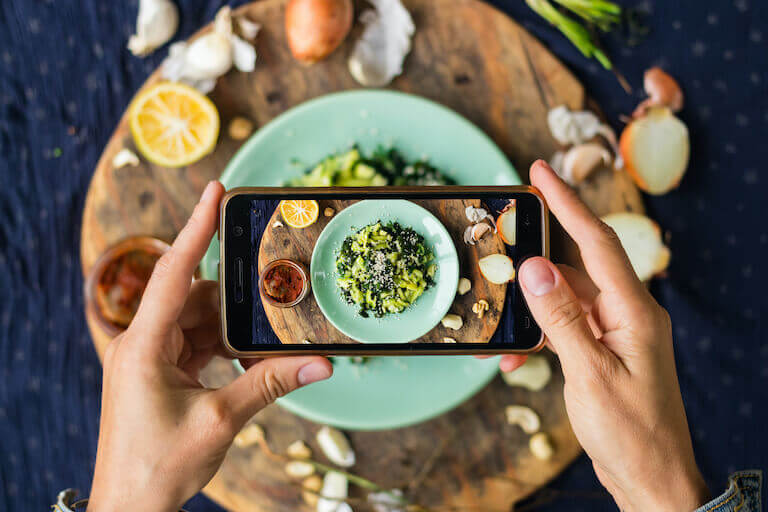
A food stylist should select exactly the right ingredients to suit their project.
Beyond sourcing ingredients, a food stylist should also know how to present and manage them on set. Timing is extremely important in food photography, so stylists should be aware of how certain dishes may react under hot lights and other environmental factors. Often, foods can become inedible and unsafe while sitting out, and stylists may be relied upon to maintain proper standards of sanitation.
For instance, knowing how quickly lettuce might wilt and being ready with a replacement could be vital for an organized and efficient shoot. Since stylists generally carry every tool they may need at all times, preparation is an important asset.
Learning the Tricks of the Trade
A food stylist should also be prepared to employ tips and tricks that keep food looking prime, even over a span of several hours.
Here are some unusual and creative ways for getting a good food shot that may not necessarily include palatable food:
- Whipped egg whites can be used to create foam for a perfect artisan latté.
- Toothpicks may keep layers of a cake, sandwich, or dinner entreé in place.
- Soaking cotton balls in hot water and hiding them in the presentation can create a false steam effect to make food appear hot.
- Undercooked meat can keep its visual appeal much longer than a properly cooked steak.
- Mashed potatoes can make a great, affordable filler when staging wraps, calzones, or burritos.
- Plastic ice cubes can keep their shape long after the real thing has melted.
- Inserting a false bottom into a bowl of soup can raise the visibility of certain ingredients.
Creating Beautiful—and Compliant—Dishes
However, food stylists should be aware of the strict laws that protect consumers from false advertising. In the example of the bowl of soup, a food stylist typically can’t add anything to the original product that may be considered deceptive, such as additional food that isn’t actually included.
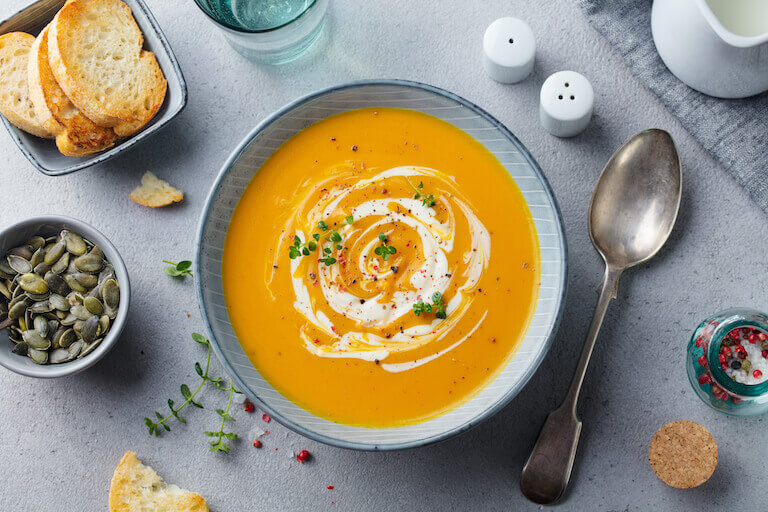
A food stylist is generally responsible for all aspects of presentation, from preparing the food to placing every last prop and garnish.
There can be more flexibility when it comes to decorative items that are unrelated to the main product. For example, an ice cream company’s ad must show the real ice cream product—but the whipped cream topping can be mixed with another substance, like shaving cream, since it is simply decorative.
As a food stylist, you may have to simultaneously consider sound food preparation fundamentals, safe sanitation standards, artistic staging and presentation, methods for ensuring food appears appetizing on camera, compliance with advertising laws, and effective collaboration with the other members of your production team. It’s a lot to balance—but can be the perfect career for a person with the right skills and inclination.
Ready to Take the Next Step in Your Food Stylist Career?
If you’re interested in becoming a food stylist, consider starting on that career path with training in online culinary school at Escoffier or at one of the ground campuses in Boulder or Austin. This can be a great way to acquire the fundamental skills you may need in this profession, and to start building your culinary network.
Financial aid, grants, and scholarships are available to those who apply and qualify, which can help bring your food stylist career that much closer to becoming a reality.
DID YOU FIND THIS ARTICLE HELPFUL? YOU MIGHT ENJOY THESE, TOO.
- How to Start a Food Business from Home
- 5 Alternative Careers Out Of Culinary School
- 5 Tips For How To Become A Personal Chef
*Information may not reflect every student’s experience. Results and outcomes may be based on several factors, such as geographical region or previous experience.

